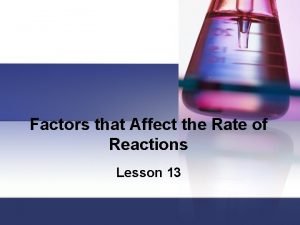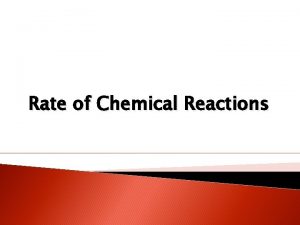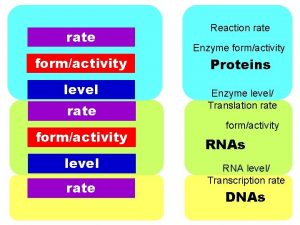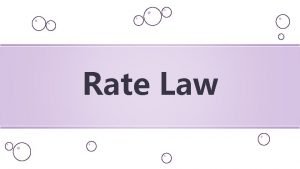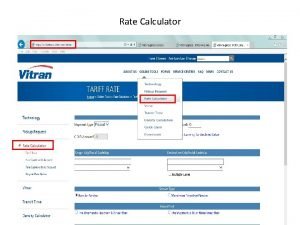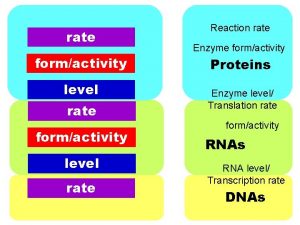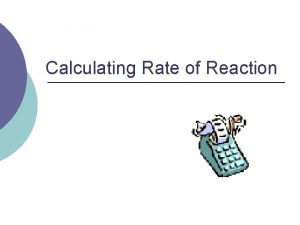46 RATE OF REACTIONS RATE OF REACTIONS The









- Slides: 9

#46 RATE OF REACTIONS

*RATE OF REACTIONS The speed of how fast or slow a substance reacts is known as the rate of reaction. rusting baking explosion slow fast very fast

*RATE OF REACTIONS • The rate of reactions depend on: – How often things collide together – The amount of energy that is needed or released • Things that increase the number of collisions will speed up the rate of reactions.

*INCREASED TEMPERATURE • When you increase the temperature of a reaction, more collisions between particles occur. • The most common way to make particles move faster is to add energy to the reactants which will raise the temperature. Example – when cooking in most occasions chemical reactions go very slow or do not take place at all until you add heat to the reactants. Adding heat increases the amount of energy and makes particles move faster and collide more with other

WHAT IS THIS CARTOON SAYING ABOUT TEMPERATURE

*INCREASED CONCENTRATION When increasing concentration, there are more particles in the same amount of space. This means that the particles are more likely to collide and therefore more likely to react with on another. lower concentration higher concentration

*INCREASED SURFACE AREA • Chemical reactions of solids only take place on the surface of the particle. • Splitting the solid into multiple pieces increases the number of surfaces/surface area in which the particle can collide with • The smaller the piece, the larger the surface area, and greater chance of collisions low surface area high surface area

*ADDING A CATALYST • A catalyst is a substance that increases the rate of reaction without being used in the reaction. • A catalyst never produces more product, they only produce the same amount of product faster. At the end of a chemical reaction a catalyst remains unchanged.

CONCEPT CHECK 1. Changing the _______ affects the frequency of solid reactants 2. Changing the _______ affects the frequency and energy of collisions 3. Changing the _______ affects the frequency of dissolved reactants 4. Explain a catalyst in your own words.
 Chemical reactions section 2 classifying chemical reactions
Chemical reactions section 2 classifying chemical reactions Unit 5 chemical reactions answers
Unit 5 chemical reactions answers 10 examples of redox reaction
10 examples of redox reaction Section 2 classifying chemical reactions worksheet answers
Section 2 classifying chemical reactions worksheet answers Chemical reactions section 3 reactions in aqueous solutions
Chemical reactions section 3 reactions in aqueous solutions Factors that affect the rate of reactions
Factors that affect the rate of reactions Phép trừ bù
Phép trừ bù Lời thề hippocrates
Lời thề hippocrates Tư thế worm breton
Tư thế worm breton đại từ thay thế
đại từ thay thế





